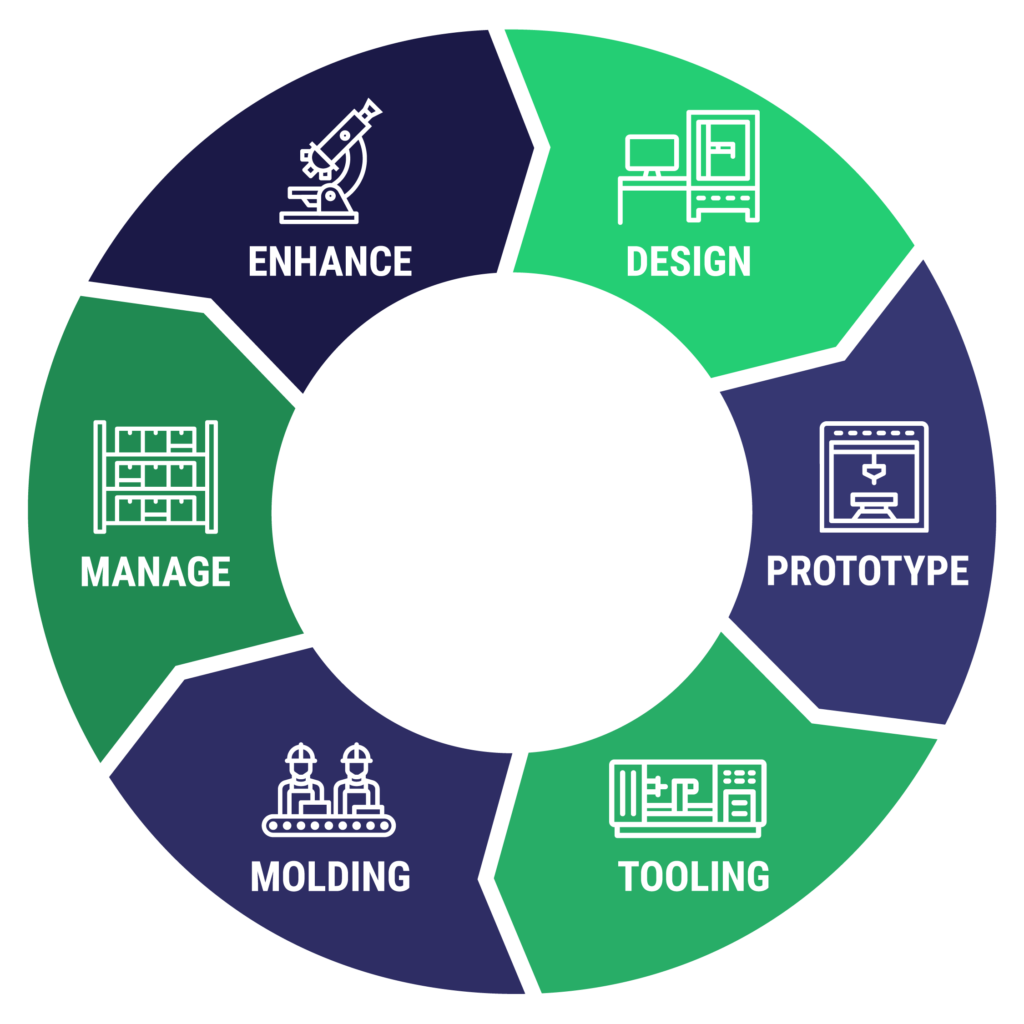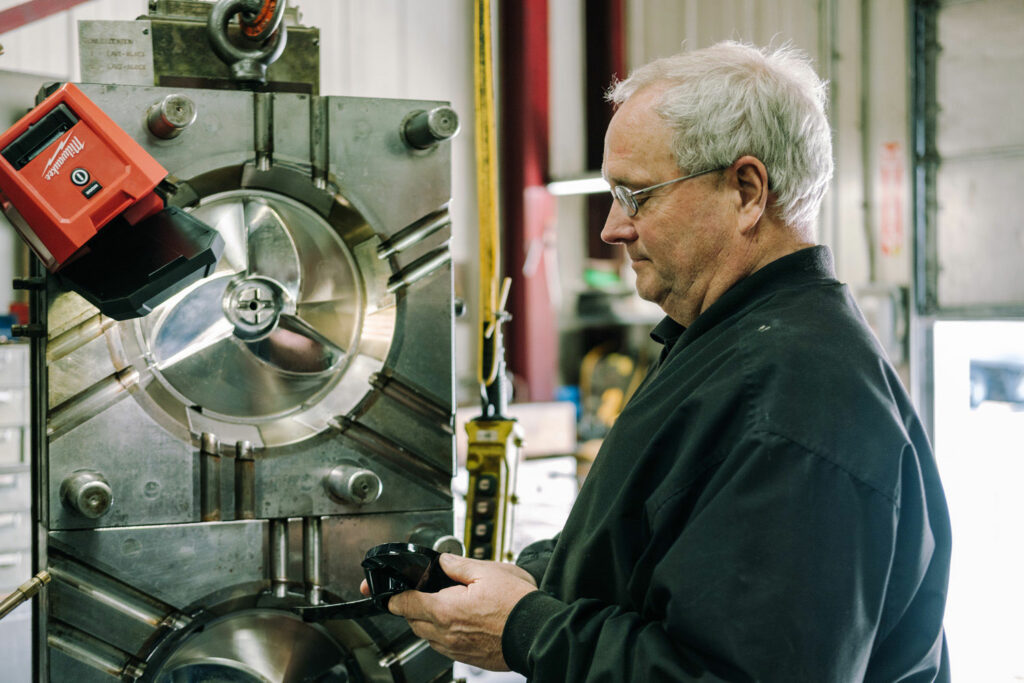
An Overview of the Plastic Molding Process
Plastic injection molding is by far the most common way to produce large volumes of finished plastic parts for every kind of commercial and industrial use. Its flexibility as a material is unmatched; therefore customization is virtually endless.
Nearly any type of thermoforming resin can be used in the injection molding process, and there are thousands of resins to choose from in order to achieve your desired result.
The K&B Complete Process

K&B has a proven 6-stage process that provides full-service solutions, rather than just simply making a part. By helping companies navigate plastic injection molding methods to streamline products and processes, money is saved and time is well spent.
We don’t just manufacturer the right parts; we evaluate the entire process, helping companies consistently deliver and outperform the competition. Here are the six stages that result in the perfect product for your project:
Design
Prototype
Tooling
Molding
Manage
Enhance
Get a deeper look into our tried-and-true process.
The Molding Step
Once the product specifications have been approved, we move into the molding process. In a nut shell, melted liquid resin is injected under high pressure into the cavity of a cast and then rapidly cooled, forming a solid shape. The cycle to make an individual finished part may take anywhere from a few seconds to minutes depending on the complexity and size.
The molding process consists of these basic steps:
- The plastic resin comes in raw pellets. These are dried to the right moisture content, when, if necessary, they can be blended with pigments or colorants.
- The dried pellets are poured into the molding machine repository. A channel inside the barrel of the machine will transport these pellets towards the mold while simultaneously heating them.
- Within the barrel, the pellets are mixed and heated until fully molten, forming a liquid resin.
- The heated mold closes automatically and resin is injected through a gate and into the mold cavity.
- The mold is cooled quickly to solidify the part inside.
- The mold opens, and the part is ejected to begin a new cycle.

PLASTIC MOLDING WITH K&B
For more than 50 years, K&B Molded Products has been delivering the high quality, cost-effective benefits of injection molding to industries like HVAC, Marine, Wastewater Management, and other markets across the country. We’re proud to stand by stringent standards for quality and fast turnaround times, as well as contributing professional experience and respect to both in-house and custom design work.
To find answers to frequently asked questions about plastic injection molding, download our latest eBook, “10 Things to Ask Your Plastic Injection Molder.”




